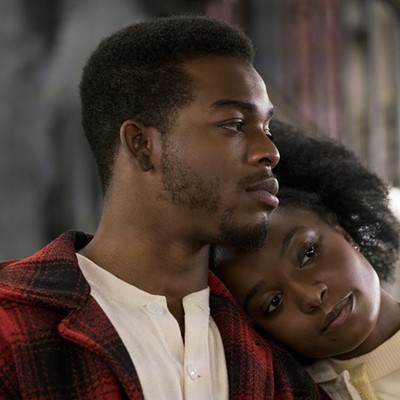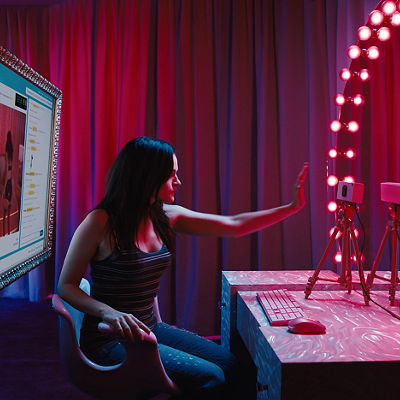After Jimmy Savile, Amanda Bynes, Lindsay Lohan, and that Christian puppeteer who wanted to kidnap, kill, and eat little boys, it's hard not to imagine the children's entertainment industry as a fount of unimaginable filth and degeneracy. But for those who'd prefer to remember their childhoods happily, Mathew Klickstein offers nostalgic millennials a happy place to return to. In Slimed! An Oral History of Nickelodeon's Golden Age, published September 24, Klickstein argues that '90s Nick was a near-edenic model of children's programming, offering, on the one hand, "quirky and edgy and odd" shows like Ren and Stimpy, Clarissa Explains It All, and The Adventures of Pete & Pete, and comforting, chicken-soup programming like Doug and Hey Dude on the other.
Nickelodeon dominated children's entertainment during the Clinton years. "When I left Nick, we had 56 percent of all kids viewing," boasts former president Gerry Laybourne. In lieu of a straightforward history, Klickstein weaves together a well-paced, wide-ranging, sometimes (necessarily) contradictory collage of what it was like to work at a network that had more ideas than cash. Somewhere between a tribute, a belated yearbook, and an autopsy, Slimed! attempts to figure out--with the help of nearly 200 performers, writers, producers, and execs who worked at the network between 1985 and 2000--how a fledgling channel with virtually no original programming identified, captured, and entertained the hell out of its preteen demographic.
Slimed!'s nostalgia feels entirely deserved; the golden age of Nickelodeon was a more innocent time. Larisa Oleynik, the star of The Secret World of Alex Mack, sighs in relief, "I wasn't responsible for selling backpacks. I didn't have a side career as a pop star. These kids now are doing so much." Pitting themselves against Mickey Mouse (while the Magic Kingdom was enjoying its own creative renaissance), Nick execs aimed to be more Yellow Submarine than Snow White, eschewing the "blue-eyed, blond-haired specimens from the perfect world of Disney." According to many of the interviewees, Nick's financial success led to its creative decline, especially when production moved from Orlando to Los Angeles and children's programming as a whole became more aspirational, like Disney's pop-star fantasy of Hannah Montana, than relatable.
With the exception of Bynes, who apparently wasn't interviewed, Klickstein touches on almost every topic you would want him to, including the stress of growing up in front of the cameras, the visual influences of Rugrats, and the thought processes behind the orange-and-green logos and the set design of Clarissa's bedroom. Double Dare and What Would You Do? host Marc Summers is the book's MVP, his still-dorky enthusiasm now intermixed with bawdy tales of drug use among the crew. The celebrities who still have careers to protect, like Oleynik, Melissa Joan Hart, Kenan Thompson, and Janeane Garofalo, are more guarded in their contributions.
By far the most frustrating chapter is the one subtitled "Why were so many of the people on Nickelodeon white?" It's an important question, and one that Nick's roster of writers and producers answer in almost uniformly cringe-inducing ways. Fred Keller, who directed nearly half the episodes of Hey Dude, identifies featuring a "Native-American character...becoming the expert of flora/fauna" as "one of the more important things" his show did. Steve Viksten, a Rugrats writer, explains that the staff created Susie Carmichael when they realized "We don't have any blacks on the show." Debate still rages on whether Doug's BFF Skeeter was black or just blue.
The fact that many of us still care about those issues, though, speaks as much to nostalgia as it does to Nick's halcyon days. Slimed! invites its readers to indulge in, as well as challenge, that nostalgia by offering an all-you-can-see view behind the curtain. By necessity, the breadth of the book's topics makes some sections duller than others--one Salute Your Shorts producer's union-bashing was less than worthwhile--but Slimed! is the best kind of blast from the past: dishy, unwholesome, and thought-provoking enough to make you question your own memories.
Here are ten of the best snippets from Slimed!:
10. Ren and Stimpy was the Community of its day.
Nearly an entire chapter is devoted to the ugliest event in Nickelodeon's history: Ren and Stimpy creator John Kricfalusi's firing from his own show. Kricfalusi was reportedly unable to deliver episodes on time and relished provoking his impatient bosses with proposed storylines about dingleberries, blowjobs, and butt plugs. "We had sheriffs trying to get our materials from John out of his studio," recalls the vice president of animation at the time. But Kricfalusi still has loyalists in his camp. Says one: "If John was at fault for his so-called ‘perfection,' it reminds me of the Pope telling Michelangelo to hurry up with the painting of the Sistine Chapel. John was creating the future of the animation industry."
9. Parents of child actors were barred from the set.
"Today, [the American Federation of Television and Radio Artists] requires a parent or parental figure for each kid to be on set," says Marjorie Silcoff, a performer on You Can't Do That on Television. In the Wild West days of Nickelodeon, however, parents weren't just forbidden from stepping inside the studio, but also from reading their kids' scripts. To enforce the restriction, child actors were banned from taking scripts home. "Kids do not talk to parents much anyway," justified You Can't creator Roger Price. But Price was far from indifferent toward his young cast. Kevin Kubusheskie, another cast member on the show, recalls the time Price "brought a gun to [an impromptu crew meeting], announcing that if anyone tried to give or sell drugs to any of the kids on the show, he would kill them."





